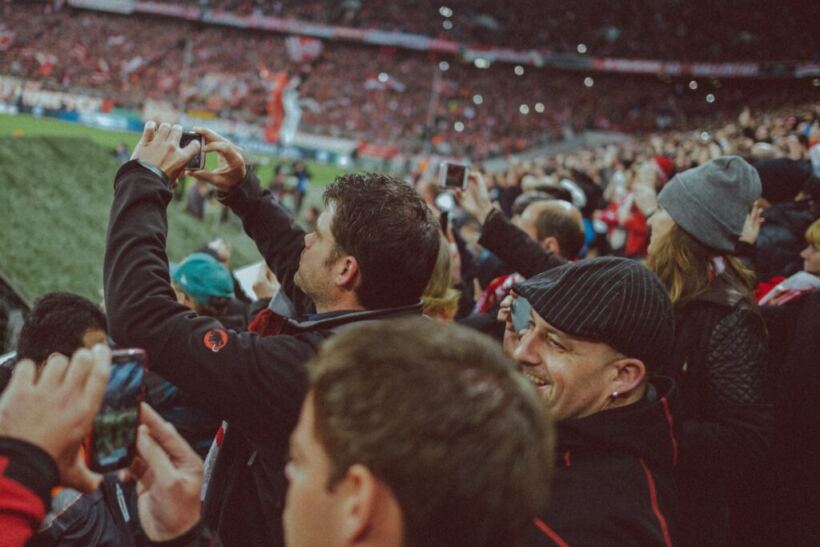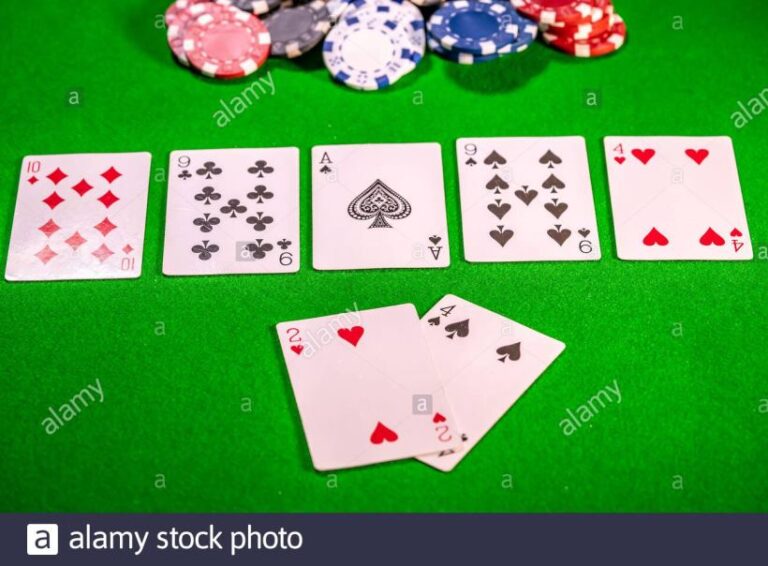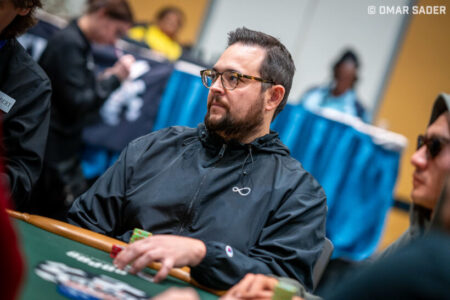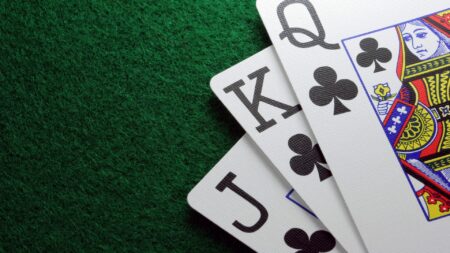If you’d like to learn the game of Texas Holdem, you should begin with learning about the different hands and rules. This is precisely what you’ll discover in this beginner-friendly guide.
Texas Holdem is an easy poker game to learn, but it may be challenging to master.
This guide will cover how to bet on poker, poker hands, rules, and more.
Texas Holdem Poker – What It Is?
The most popular version of poker is Texas Holdem. The no-limit form of this game is played in all of the major professional poker events around the globe, including the World Poker Tour, the World Series of Poker, and the European Tour of Poker.
If you’re new to Texas Holdem betting, it’s important to start with the fundamentals of the game.
Rules of Texas Holdem
The objective of a Texas Holdem game is to build the greatest five-card poker hand possible using your pocket card and the shared cards.
It’s important to note that the dealer deals the five shared cards are in three phases:
The Flop: This is comprised of the first three shared cards.
The Turn: The 4th community card is The Turn.
The River: This is the community’s 5th and final card.
Your goal is to make your poker hand of five cards with the best five cards available out of the total seven cards (the two pocket cards in your hand, and the five shared cards on the table).
You may achieve this by utilising both of your pocket cards with three shared cards, one pocket card with four shared cards, or no pocket cards at all.
If everyone but one player folds, the surviving player will win the pot without revealing any cards.
As a result, players may not necessarily need to have the best hand to win the pot. It is always feasible to play poker like a pro by ‘bluffing’ and tricking other players into folding stronger cards.
Texas Holdem Hands
The following hand rankings are not exclusive to Texas Holdem, but they may be used in a variety of poker games.
Royal Flush – A hand in which all five cards are of a similar suit and are rated from ace to ten; for example, A♥K♥Q♥J♥10♥
Straight Flush – A hand in which all five cards are of a similar suit and are rated in the same order; for example, 9♣8♣7♣6♣5♣.
Four of a Kind – 4 cards with a similar rank; for example, Q♣Q♥Q♦Q♠4♦
Full House – 3 cards with a similar rank and 2 additional cards with a similar rank; for example, J♣J♥J♠8♦8♥.
Flush – Any 5 cards in a similar suit; for example, A♠J♠8♠5♠2♠.
Straight — Any 5 consecutively rated cards; for example, Q♣J♦10♥9♠8♦.
Three of a Kind – 3 cards with a similar rank; for example, 8♣8♠8♦K♣4♥
Two Pair – 2 cards with a similar rank and two additional cards with the similar rank; for example – A♠A♣J♦J♣7♠
One Pair – Consists of two cards with a similar rank; for example, 10♥10♣9♥4♦2♦.
High Card – A hand with 5 unmatched cards; for example, A♣J♦10♠5♣2♥ would be labelled “ace-high.”
Knowing how hands are played and the sequence of play, as detailed above, is the first step in learning Holdem poker and refining your poker betting strategy.
Playing Instructions
Let’s take a look at all of the crucial features of a Texas Holdem game, including the various table locations and betting rounds.
The Blinds
To begin betting, the first two players to the left of the button must post a ‘small blind’ and a ‘big blind,’ respectively.
The action then continues on multiple levels:
● Pre-flop
● Flop
● Turn
● River
Two people are required to post big and small blinds before each new hand. The blinds are the first forced bets in the game.
The game would be very uninteresting without these blinds since no one would be compelled to put any cash into the pot, and people could just wait until they were dealt a pair of aces and then play.
Every hand will have some amount of activity because of the blinds.
The blinds are increased at regular gaps throughout tournaments. As the number of participants in a tournament decrease and the remaining people’s stacks gets larger, the blinds must increase, or the game may never end. The blinds in cash games are always the same.
The small blind is posted by the player immediately to the left side of the button. The big blind is posted by the player directly to her or his left.
The small blind is usually half the value of the big blind, although this criterion changes from place to place and may also be dependant on the games being played.
First Round of Betting: Preflop
After every player has been given two pocket cards, the first betting round begins. The person to the left side of the big blind is the first to act.
Because the person must act first, this position is known as “under the gun.” There are three options for the 1st player:
● Call: match the big blind’s amount.
● Raise: raise the wager.
● Fold: Folding a hand means throwing it away.
If a player decides to fold, she or he is no longer in the game and is not able to compete with the present hand.
The maximum cash a player may raise is determined by the type of game being played.
The minimum initial raise in a no-limit Texas Holdem game should be at least double the big blind, while the max raise could be all of the chips in a player’s stock (an “all-in” bet).
In Holdem poker, there is a variety of betting options:
A raise in a Holdem game of fixed-limit (or simply “limit Holdem”) is always double the big blind.
Holdem game of Pot-Limit (which is much less frequently played than the other versions) allows players to wager anything from the big blind (the smallest bet permitted) to the whole amount in the present pot.
The action moves clockwise around the table once the first player acts, with every player having the exact three choices – to raise, call, or fold.
The preflop round is finished after the final bet is done and the act is ‘closed,’ and play continues to the “flop.”
Second Round of Betting: Flop
Following the completion of the first preflop betting round, a second betting round including only those players who have yet not folded commences.
In addition to the choices to bet, fold, call, or raise, a person may now ‘check’ if no betting action has taken place before.
Simply put, a check indicates that the action is passed to the next person in the hand.
The betting will proceed until the final raise or bet is called (which finishes the action).
It’s also possible that all players just decide not to bet and check throughout the table, closing the betting street.
Third Round of Betting: The Turn
Following all betting activity on the flop, the 4th community card, known as the turn, is placed facing up.
Following that, another street of betting, similar to the previous round of play, takes place.
People have the choice to bet, check, fold, call, or raise once more.
Final Round of Betting: The River
Following all betting activity on the turn, the dealer deals the 5th community card, known as the river, facing up.
Another street of betting takes place, just like what happened on the preceding round of play.
The remaining people choose to check, bet, fold, call, or raise once more.
Following the conclusion of all betting activity, the remaining participants in the hand with pocket cards reveal what they have in order to decide a winning player. This is referred to as the showdown.
The Showdown
Those who were left reveal their pocket cards, and a winner is declared. The player with the greatest five-card combination wins the pot.










